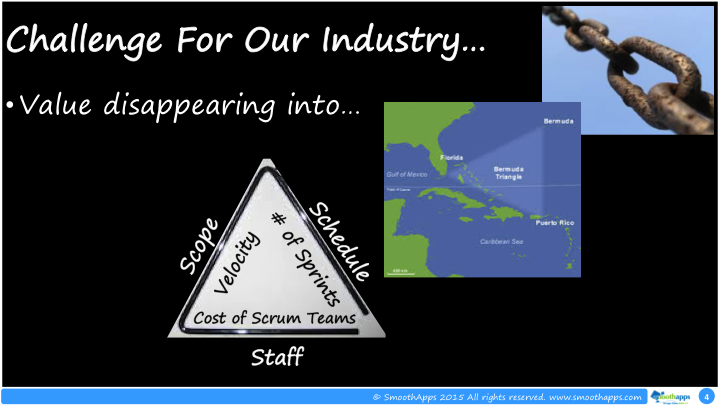
Studies have shown that sizable numbers of business owners look to transfer their ownership interests in the next decade, and a major concern for many is whether they’ll get out of the business what they expect. Gaps in the valuations of businesses are a leading cause in busted deals, which is unsurprising, given that sellers, buyers, bankers and other advisors have their own ways of valuing businesses. Three problems in particular can sink the valuation process. Business owners and valuation professionals alike should honestly and openly discuss them if they seek good valuations.
The Bermuda Triangle of Valuation
It is true that valuation, at its core, is simple and should be easy to implement, but it is often mangled in practice. While some valuation malpractice reflects a misunderstanding of the basic principles of valuation, I think that the bigger culprit is the valuation process and three problems that are embedded in it: the biases that analysts bring into their valuations, their unwillingness to grapple and deal with the uncertainties that they face when valuing businesses and the ease of access to data and tools that allow them to build in complexities into valuation models.
Bias
In an ideal valuation, you would start with no preconceptions about the companies that you are analyzing and then make your best judgments on how much value to attach to them. In practice, you almost never start with a clean slate, as everything that you have read or heard about a company will have already created perceptions about it that will affect your valuation. Ironically, the more you learn about a company and the more exposure you have to its management, the more entrenched the bias becomes. This bias is made worse if you are being paid to do the valuation as an appraiser, banker or expert witness, since the client paying for the service often has a “value” in mind that he or she would like to see, and you will feel pressure, either implicitly or explicitly, to deliver that value. At the risk of stating the obvious, all valuations are biased, with the only questions being to what degree and in which direction.
There are many tools to reflect bias in value, and one test of your valuation expertise is in how well you can hide bias in your inputs. Thus, if your intent is to lower (higher) value, you can find ways to under (over) estimate cash flows, skew growth rates (higher), push up discount rates or attach large discounts (premiums) to your end value to arrive at your final number. While bias is perhaps impossible to escape in valuation, analysts often deny its existence, express outrage when confronted about it or try to counter it by getting stamps of approval from accountants or lawyers. It would be much healthier if analysts were more transparent about their motives, open about their biases and worked at minimizing their impact on value, rather than acting like they do not exist.
Uncertainty
Uncertainty is a feature in valuation, not a bug, and it rises to the surface, especially when valuing young start-ups and companies in transition. It comes from many sources, from both within and without the firm, and analysts are often paralyzed in its presence, therefore they seek out mental short cuts (use simple pricing multiples) or try to outsource the problem (call in consultants and experts).














